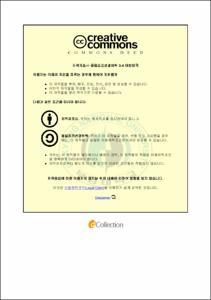Branch induction and Tissue growth of a red seaweed Gracilariopsis chorda
- Abstract
- Abstract
Tissue growth and branch induction of the red seaweed Gracilariopsis chorda have been investigated under various indoor cultural conditions. In this study, partial sequences of 18S rRNA gene, ribulose-1,5-bisphosphate carboxylase/oxygenase large subunit (rbcL) gene and photosystem II thylakoid membrane protein D1 (psbA) gene were used to identify for the species. To culture the Gp. chorda, optimal conditions for the culture temperature, light intensity, salinity, concentration of various nitrogen and phosphate, chemical preservation, and some biological factors were tested. Branches were produced the mostly at the cultural conditions of 20°C under 10μmol m-2s-1 light intensity on a 16h L : 8h D cycle with 27psu salinity in PES medium. The Gp. chorda showed optimal growth in PES medium at 20°C under 40μmol m-2s-1 light intensity on a 24h L : 0h D cycle with 27psu salinity. Optimal size of propagules usable as seeds was 1cm, and apical part of Gp. chorda was grown rapidly and less density of propagule appeared faster growth of tissues and branch induction. The Gp. chorda showed optimal growth in 50μM of ammonium chloride and 5μM of sodium phosphate. It grows very well in 100ppm of Fish waste and showed higher growth rate when branch induction first. In culture medium, Addition of chemical preservatives of 600ppm of sodium propionate and 230ppm of sodium dehydroacetate showed effective preserving after for the tissue culture.
- Issued Date
- 2013
- Awarded Date
- 2013. 2
- Type
- Dissertation
- Publisher
- 부경대학교
- Affiliation
- 부경대학교 대학원
- Department
- 대학원 생물공학과
- Advisor
- Yong-Ki Hong
- Table Of Contents
- CONTENTS
List of Tables ⅲ
List of Figures ⅲ
국문 요약 ⅵ
1. Introduction 1
2. Materials & Methods
1) Seaweed materials 3
2) Species identification 3
3) Cultural condition 5
4) Chemical preservation 6
5) Statistical analyses 6
3. Results
1) Species identification 7
2) Treatment of chemical preservatives 8
3) Treatment of nutritive substances 9
4) Salinity 10
5) Growing point 10
6) Propagule density 11
7) Propagule size 12
8) Nutrient with antiseptics mix 12
9) Optimal cultural condition 13
4. Discussion 14
Abstract 40
5. References 42
- Degree
- Master
- Files in This Item:
-
-
Download
 Branch induction and Tissue growth of a red seaweed Gracilariopsis chorda.pdf
기타 데이터 / 3.09 MB / Adobe PDF
Branch induction and Tissue growth of a red seaweed Gracilariopsis chorda.pdf
기타 데이터 / 3.09 MB / Adobe PDF
-
Items in Repository are protected by copyright, with all rights reserved, unless otherwise indicated.